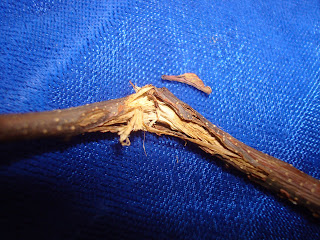A few weeks ago, there was an email floating around from "Ag Industry" that was claiming that frogeye leafspot,
Cercospora sojina, had been found in soybeans. This just did not seem possible to me, especially on leaves, from early vegetative growth stages on soybean, but never say never.
Several hundred plant samples later, I had forgotten about the frogeye leaf spot claim, until I was looking at a sample of 20 soybean leaves that had been collected from the Soybean Rust Sentinel Plot in Richland County, Illinois.
Then, the memory came flooding back to me when my Graduate Student asked me, "Is this frogeye leafspot?" as she leaned over my shoulder, while I was carefully looking at each leaf from the Richland Soybean Sentinel Plot under the dissecting scope. I said, "No, this is PHYLLOSTICTA LEAF SPOT",
Phyllosticta sojicola, as I pointed out to her that the lesions had black, round fruiting structures within necrotic lesions, which can be easily seen with some magnification. Also seen at this link:
APS: Phyllosticta leaf spot with pycnidia
But, I told her that the early infection of Phyllosticta leaf spot sure could look like the lesions of frogeye leaf spot! Both of these diseases are easily distinguished under a scope. Phyllosticta lesions will eventually grow, as the disease develops, and become "V-shaped" within soybean veins. Phyllosticia leaf spot is not usually considered to be a serious disease.
I told Dr. Carl Bradly, University of Illinois Crop Sciences, Field Crop Plant Pathology, Extension Specialist, this story and he agreed with me that these two diseases could be confused. In fact, he reminded me that he had written an article about this very subject in the The Bulletin in 2007:
Similar Symptoms on Soybean: Phyllosticta Leaf Spot Vs. Frogeye Leaf Spot
A lot of attention has recently been given to frogeye leafspot, since this pathogen has been found to have reduced sensitivity to fungicides in Tennessee. For more information:
http://bulletin.ipm.illinois.edu/article.php?id=1429
For this reason, it is probably a good idea that frogeye leaf spot is correctly diagnosed.






























